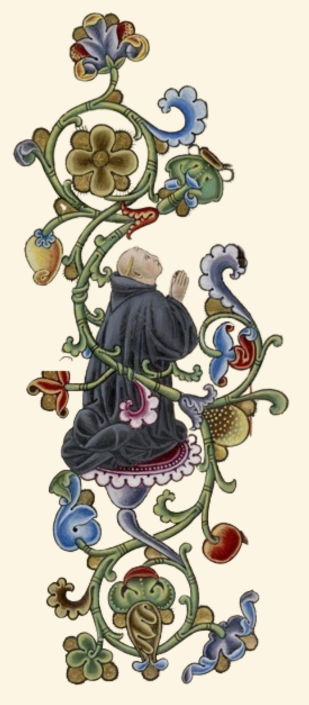
Marbled
October 14th, 2025
One of my favorite things to do in the rare book library, is crack open a book and discover beautiful marbled endpapers. Not only can the endpapers be marbled, so can the binding boards and even the fore edges. Marbling has occured in the book arts for hundreds of years, starting in Japan and eventually spreading west. Dozens of patterns have been created using marbling techniques. I have included a handful of examples I have collected from the library of marblings I enjoy.

The French Curl, also known as Snail, marbling is quite possibly my favorite of the techniques, and one of the more popular types since its development in the 17th century. Marbled endpapers are used as decorative elements that cover various binding materials that aren't meant to be seen. But as books became mass-produced, the need for hand-marbled papers and boards fell out of fashion. These specimens also show dentelles, which means lace in French. The definition from Peter Harrington is "A dentelle is any ornamental tooling with a lace-like appearance. We generally use it only in the context of “inner dentelles,” where the turn-ins have been elaborately rolled in gilt." They are fabulously ornate and I have even seen 18th century books with pineapple decorated inner dentelles!
Nonpareil patterns in marbling were popular back in the Victorian period.These patterns fascinate me, especially this specimen, because there are so many thin lines of pigment and I am amazed they don't become muddy when a comb is brushed through to create the dragged lines, but rather each colormanages to stay distinct.
Turkish marbling is also quite plentiful. I really love Fig. 6 because the colors remind me of the carpet in an arcade or skating rink. Turkish marbling contains ox-gall (bile) to disperse the colors in the marbling, creating the drop and ripple effects on the paper.
Similar to Turkish patterns, Schrottel has a pebbly appearance also typically using ox-gall with a mixture of oil to create the rings of color. There are still dozens of patterns not shown in these photos. Which are your favorites?

